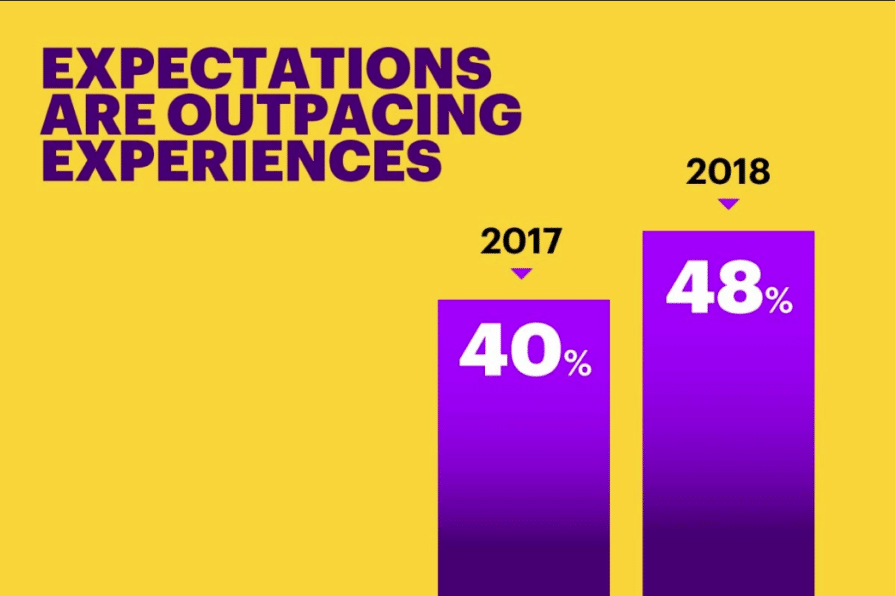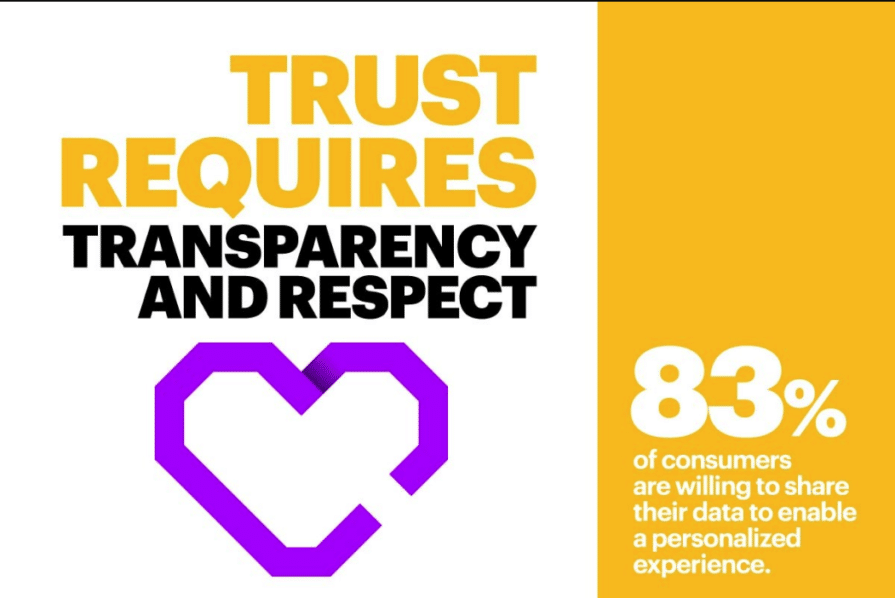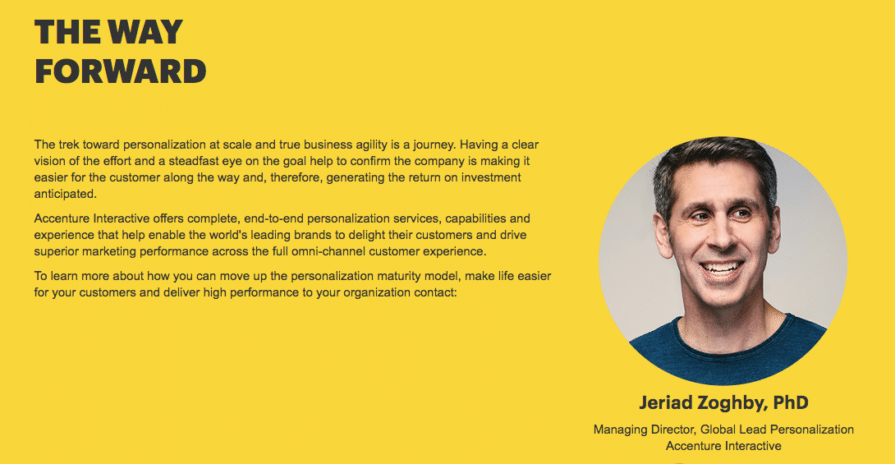New research from professional services firm Accenture finds consumers feel that digital experiences are falling short of expectations—yet they’re more likely to shop with a brand that treats them in a personalized manner.
According to the 2018 Personalization Pulse Check from Accenture Interactive, 91 percent of consumers are more likely to shop with brands that recognize, remember, and provide them with relevant offers and recommendations.
In last year’s Personalization Pulse Check report, the firm found the top challenge for businesses was the “burden of choice”—i.e., learning how to uniquely serve everyone without overwhelming anyone. This year’s data shows that the burden of choice did not improve—in fact, experiences are worse.
This year’s report finds that nearly half (48 percent) of all consumers have left a business’ website and made a purchase elsewhere because the experience was poorly curated, up from 40 percent last year. It also offers insights to help brands improve performance when approaching personalization, such as providing a two-way dialogue with customers, being trustworthy and transparent when it comes to personal data, and being cool, not creepy with experiences.
Brands need to enable a two-way dialogue
The report finds consumers aren’t looking for brands to define their journeys—they want brands to design experiences that help them create their own journeys. This fundamental shift away from traditional communications modes to interactive conversations will enable marketers to drive new levels of personalization, trust and meaningful experiences.
Most brands have been focused on trying to predict a customer’s journey in order to create personalized experiences, but are now realizing this approach is difficult to scale. The research found that 75 percent of consumers say they would find it valuable to create and manage a “style profile”, or a living profile, that brands could use to better curate experiences and make recommendations.
“Customers often find themselves overwhelmed by choices and underwhelmed by poorly curated experiences when interacting with brands. But there is a simple solution to solve this by creating a continuous, two-way digital dialogue,” said Jeriad Zoghby, global personalization lead at Accenture Interactive, in a news release. “This shifts control of the experience to the customer, enabling brands to more effectively listen to the customer and enable them to buy and consume what they want on their own terms. Not only does this result in a significantly better experience for the individual, but it is also the most effective way for brands to scale 1-to-1 personalized experiences.”
When it comes to data, transparency and trust are key
The report finds that consumers are willing to share their data and rarely feel that companies are too personal—but they lose trust if brands go outside the relationship. Nearly three-quarters of consumers (73 percent) say that no retailer or service provider has ever communicated with them in a way that felt too personalized. And of the 27 percent who have felt it was too personal or invasive, nearly two-thirds (64 percent) said that they felt uncomfortable because they didn’t knowingly provide the data the brand used. The net take-away? Transparency is key.
“It is a natural tendency for brands to over-rotate on acquiring as much data as possible, and, although data is critical to enabling personalized experiences, they would be better served focusing on designing great experiences and leveraging the data provided directly by the customer,” said Zoghby.
Be cool—not creepy—with personalization strategies
The survey asked consumers how creepy or cool they found certain personalization approaches, such as apology emails after a poor online experience or in-store associates armed with their purchase histories. According to the data, the most invasive approach is using consumer location to offer personalized deals.
- Forty-one percent of consumers find it creepy when they receive a text from a brand or retailer as they walk by a physical store
- Forty percent find it creepy when they get a mobile notification after walking by a store
- Thirty-five percent find it creepy when they get ads on social sites for items they’ve browsed on a brand’s website
Respondents indicated that an appreciated tactic used by brands is sending apology emails after offering poor in-store or online experiences (45 percent) or an apology message on the brand website (41 percent).
Accenture Interactive surveyed 8,000 consumers from United States, United Kingdom, Canada, France, Germany, Sweden, Italy and Spain about their preferences and expectations when it comes to interacting with brands, retailers and service providers. The survey was fielded in November 2017.






